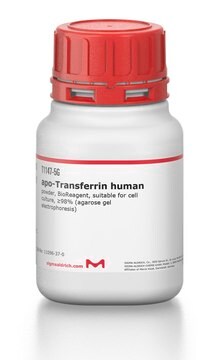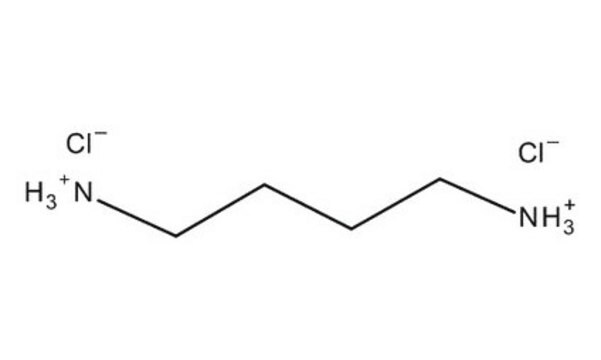P5780
Putrescine dihydrochloride
powder, BioReagent, suitable for cell culture
Sinónimos:
1,4-Butanediamine dihydrochloride, 1,4-Diaminobutane dihydrochloride, Tetramethylenediamine dihydrochloride
About This Item
Productos recomendados
origen biológico
microbial
synthetic
Nivel de calidad
Línea del producto
BioReagent
Análisis
≥97% (TLC)
formulario
powder
técnicas
cell culture | mammalian: suitable
mp
280 °C (dec.) (lit.)
solubilidad
H2O: 100 mg/mL
cadena SMILES
Cl[H].Cl[H].NCCCCN
InChI
1S/C4H12N2.2ClH/c5-3-1-2-4-6;;/h1-6H2;2*1H
Clave InChI
XXWCODXIQWIHQN-UHFFFAOYSA-N
¿Está buscando productos similares? Visita Guía de comparación de productos
Descripción general
Aplicación
Acciones bioquímicas o fisiológicas
Palabra de señalización
Danger
Frases de peligro
Clasificaciones de peligro
Acute Tox. 2 Inhalation - Acute Tox. 3 Dermal - Acute Tox. 4 Oral - Eye Dam. 1 - Skin Corr. 1B
Código de clase de almacenamiento
6.1A - Combustible acute toxic Cat. 1 and 2 / very toxic hazardous materials
Clase de riesgo para el agua (WGK)
WGK 1
Equipo de protección personal
dust mask type N95 (US), Eyeshields, Gloves
Certificados de análisis (COA)
Busque Certificados de análisis (COA) introduciendo el número de lote del producto. Los números de lote se encuentran en la etiqueta del producto después de las palabras «Lot» o «Batch»
¿Ya tiene este producto?
Encuentre la documentación para los productos que ha comprado recientemente en la Biblioteca de documentos.
Los clientes también vieron
Nuestro equipo de científicos tiene experiencia en todas las áreas de investigación: Ciencias de la vida, Ciencia de los materiales, Síntesis química, Cromatografía, Analítica y muchas otras.
Póngase en contacto con el Servicio técnico















